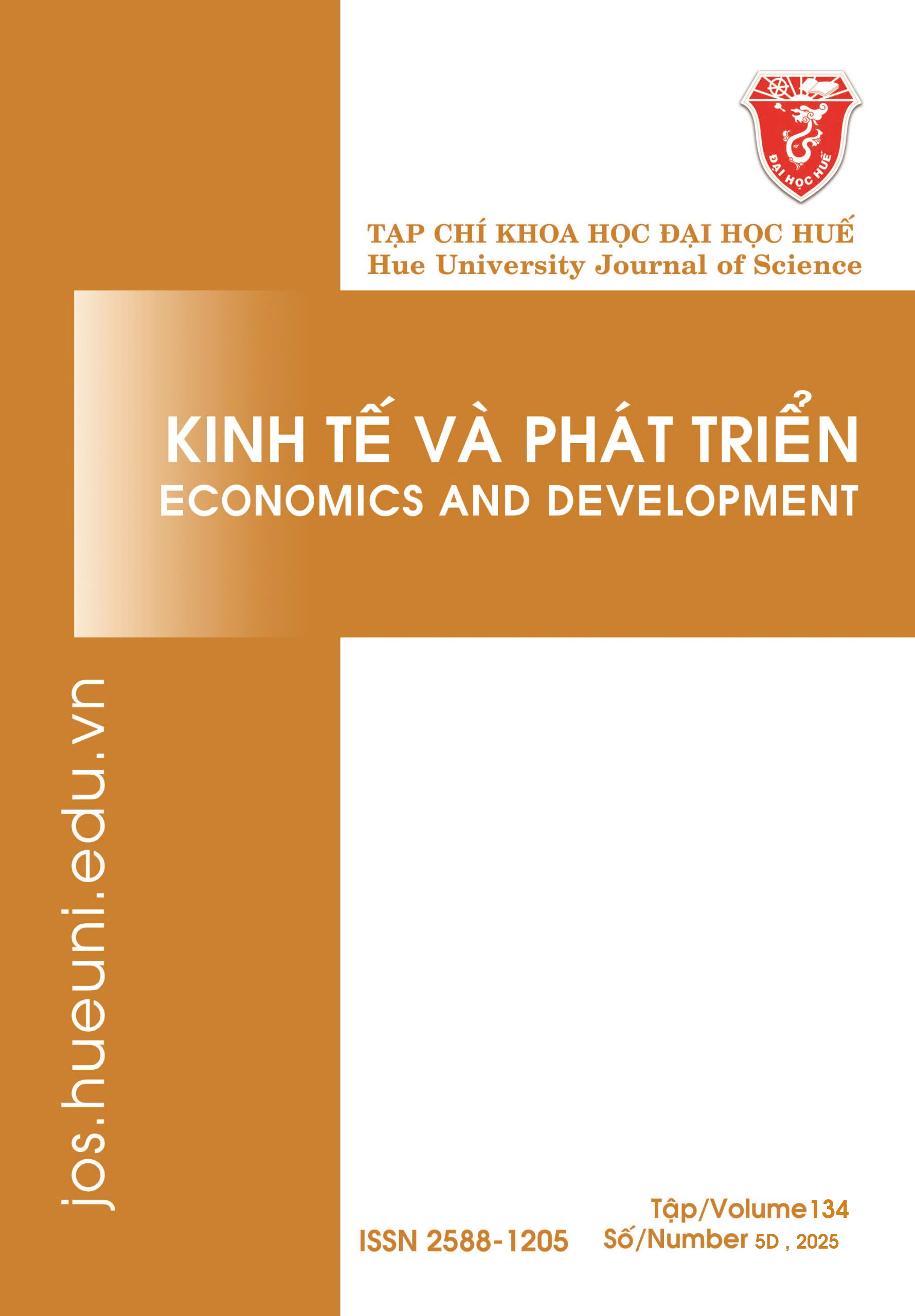Tóm tắt
Crop production in the sandy area of Hai Lang district is transforming, shifting from traditional mono-cropping models to improved cropping patterns such as annual intercropping, annual crop rotation, and mixed patterns of intercropping and rotation. This study estimated the income effect of the adoption of improved cropping patterns, using primary data collected from a sample survey of 186 households from two selected communes in a sandy area of the district. It was found that farmers’ likelihood of adoption of improved cropping patterns is significantly affected by the age of the household head, the household’s wealth status, the plot area, participation in extension training, and access to credit. Using the propensity score matching approach, the income effect of adoption was estimated. The adopters at the study site attained income that is 20–25% greater than matched non-adopters.
Tài liệu tham khảo
- Fan Y., He L., Liu Y., Wang S. (2022), Optimal cropping patterns can be conducive to sustainable irrigation: Evidence from the drylands of Northwest China, Agricultural Water Management, 274 (1), 1–13.
- Pisante M., F. Stagnari, Grant C.A. (2012), Agricultural Innovations for Sustainable Crop Production Intensification, Italian Journal of Agronomy, 7(4), 300–311.
- Nithinkumar K., Y. Yernaidu (2013), Precision Agriculture: A Modern Technology for Crop Management, Research Gate, 2(9), 280–284.
- Viet N. Q., L. D. Thuan, N. N. Nam (2014), Initial establishment of soil degradation map proposed by WOCAT at communes in Ha Lang District, Quang Tri Province, Journal of Science and Technology, Hue University, 1(1), 124–134.
- Phuong L. T. H. (2011), Climate change and farmers’ adaptation: A case study of mixed - farming systems in the coastal area in Trieu Van commune, Trieu Phong district, Quang Tri province, Vietnam, Swedish University of Agricultural Sciences, Uppsala, Sweden.
- Gertler P. J., Martinez S., Premand P., Rawlings L. B., Vermeersch C. M. J. (2016), Impact Evaluation in Practice, Second Edition, Washington, DC: Inter-American Development Bank and World Bank.
- Jyotsna J., Ravallion, M. (2003), Estimating the Benefit Incidence of an Antipoverty Program by Propensity-Score Matching, Journal of Business & Economic Statistics, 21(1), 19–30.
- Khandker S. R., Koolwal G. B., Samad H. A. (2010), Handbook on Impact Evaluation: Quantitative Methods and Practices, World Bank.
- Cuong P. M. (2005), Land-use change in the Northern Uplands of Vietnam: Empirical Evidence from Spatial Econometric Models and Geo-Referenced Analyses and Policy Implications for Sustainable Rural Development, Cuvillier Verlag Publisher.
- Rosenbaum, P. R., Rubin D. B. (1983), The central role of the propensity score in observational studies for causal effects, Biometrika, 70(1), 41–55.
- Ben-Akiva M. E., Lerman S. R. (1985), Discrete Choice Analysis: Theory and Application to Travel Demand, Cambridge, MA: MIT Press.
- Judge G. G., Griffiths W. E., Hill R. C., Lee T. C. (1980), The Theory and Practice of Econometrics, New York: John Wiley & Sons Inc.
- Imbens G. W. (2004), Nonparametric Estimation of Average Treatment Effects Under Exogeneity: A review, The Review of Economics and Statistics, 86(1), 4–29.
- Shively G. (1997), Consumption Risk, Farm Characteristics, and Soil Conservation Adoption Among Low-income Farmers in the Philippines, Agricultural Economics, 17, 165–177.
- Wu H., Ding S., Pandey S., Tao D. (2010), Assessing the Impact of Agricultural Technology Adoption on Farmers' Well‐being Using Propensity‐Score Matching Analysis in Rural China, Asian Economic Journal, 24(2), 141–160.

công trình này được cấp phép theo Creative Commons Ghi công-Chia sẻ tương tự 4.0 License International .
Bản quyền (c) 2025 Array
